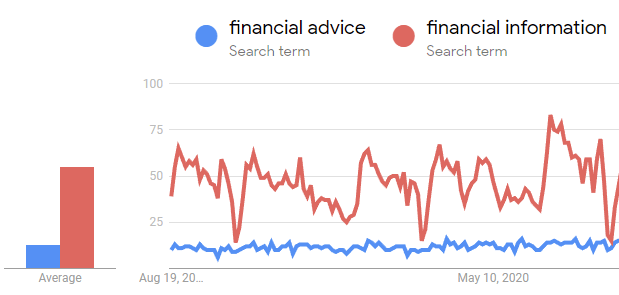
The Importance of Topic Taxonomy in Content Creation

Understanding the significance of topic taxonomy in creating content that demonstrates expertise and authority.
Understanding Topic Taxonomy
A topic taxonomy plays a crucial role in creating content that showcases expertise and authoritativeness. It serves as a structured framework for organizing information and classifying topics and subtopics based on shared characteristics. In essence, a taxonomy is a system for categorizing, organizing, and naming things, including topics, making it a valuable concept in SEO and content creation.
Screenshot of Google Trends that shows the keyword phrase Financial Information has more searches than Financial Advice
Google's approach to identifying topics and subtopics is evident in the remarks made by John Mueller and Martin Splitt. Mueller emphasized the importance of headings in communicating the topic of a page, while Splitt discussed Google's process of analyzing content to identify the main topic of a webpage. This highlights Google's focus on understanding the semantic content and layout tree to determine the primary topic of a webpage.
The goal of a taxonomy of topics is to provide a structured framework for crafting semantically relevant documents. It organizes content into different topics and subtopics, creating an outline that aligns with the inherent topics in search queries. This hierarchical structure allows content creators to focus on the broader topics and subtopics, providing a comprehensive and meaningful document.
Building a Topic Taxonomy
The evolution of search algorithms, such as deep learning, neural networks, and RankBrain, has shifted Google's focus from keywords to understanding the topics within content. Search queries are now categorized by topics, and webpages are organized into similar topic hierarchies.
When building a topic taxonomy, it's essential to consider the hierarchical structure of topics and subtopics. For example, a webpage about clothing products may include subtopics like size, material, fit, fabric, care, description, and reviews. Similarly, a webpage about link-building may encompass subtopics such as research, analysis, outreach, templates, and subject lines.
An example of the importance of accurate topic classification was highlighted in a live website audit. The website was unable to rank for a search term due to mismatched keyword targeting. The content focused on financial advice but targeted the keyword 'financial information' due to higher search volume. This discrepancy led to a lack of alignment between the webpage's actual topic and user expectations, emphasizing the significance of understanding the webpage topic and outlining relevant subtopics.
Precision and Relevance
In content creation, precision and relevance are key factors to consider. Providing direct and concise answers aligns with user expectations and saves time. Google's emphasis on precision and speed, as demonstrated by the Hummingbird update, reinforces the importance of delivering accurate and focused content. A taxonomy of topics encourages content creators to prioritize precision and completeness without overwhelming the audience with unnecessary information.
Staying on topic with a taxonomy of topics is essential for maintaining relevance and meeting user expectations. By focusing on accuracy and avoiding comprehensive but irrelevant content, content creators can align their content with the evolving search landscape and user preferences. This approach not only benefits SEO but also enhances the user experience by delivering precise and relevant information.








